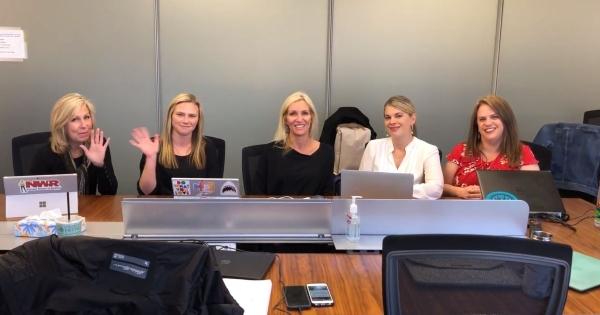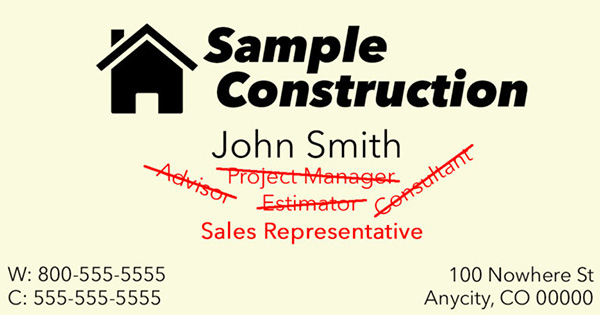“ICE” Age: Best Practice Tips for I-9 Compliance

By Cotney Construction Law.
In the past couple of years, the U.S. Immigration and Customs Enforcement (“ICE”) has been escalating worksite enforcement efforts, and this trend steadily continues.
In 2017, former Acting Director of ICE Thomas Homan instructed its investigative unit, Homeland Security Inspections (“HSI”) to potentially quintuple worksite enforcement actions in 2018, targeting both employees and employers. The organization followed through with this commitment – worksite investigations increased significantly in fiscal year (“FY”) 2018. In FY 2017, ICE conducted 1,360 audits and opened 1,716 worksite investigations. In comparison, in just the first ten months of FY 2018, 6,093 worksite investigations were initiated.
This increased enforcement has also been evident in the ICE “raids” that have made national headlines. ICE raided ninety-eight 7-Eleven stores nationwide, resulting in 21 arrests in January 2018. In June 2018, one of the largest workplace raids was conducted that led to an arrest of close to 150 immigration violators at an Ohio meatpacking plant. ICE described these operations as a warning to other companies employing unauthorized workers.
Workplace raids have created much negative publicity and workplace disruption. This underscores the importance of advising corporate clients to establish appropriate practices and to educate their workforce on compliance issues to avoid legal violations.
Reasons for a Worksite Government Investigation of Worksites
Government agents typically visit a workplace for three main reasons: 1) to conduct an inspection of the company’s Employment Eligibility Verification, Form I-9 files; 2) to conduct a raid, or 3) to detain certain individuals.
1. Inspection of Form I-9, Employment Eligibility Verification
Federal law mandates all employers to conduct verification of identity and employment eligibility for all the employees on their payroll. Employers must properly complete Employment Eligibility Verification Form I-9 (“Form I-9”) and maintain the original form in the file for inspection by government officials.
Verification of I-9 records is not a new process. Employers have been obligated to verify the identity and work eligibility of all employees on their payroll since 1986, the year the Immigration Reform and Control Act was enacted. At the time, the thought was that this requirement would significantly reduce illegal immigration. While the process and substance of the Employment Eligibility Verification Form I-9 have not varied much, the government’s enforcement has changed drastically. It appears that now the government is serious about punishing employers for knowingly hiring employees without proper immigration documentation, via both civil and criminal penalties.
The government inspection process is initiated by serving an employer with a Notice of Inspection that compels the production of Forms I-9 within three business days. The inspection of Forms I-9 can be conducted by any of the three different government agencies, including the Department of Homeland Security, the Department of Labor, or the Immigrant and Employee Rights Section of the Department of Justice (legacy Office of Special Counsel.)
What should an employer do if served with a Notice of Inspection?
- Review company I-9 records to be sure that every employee on the payroll is authorized to work in the U.S., and that their identity is properly verified.
- Respond timely to the Notice of Inspection after a careful review of all records for full completion and accuracy. The best practice tip is to conduct self-audits regularly prior to the issuance of a notice to be sure that all records are in order.
- Notify management about the Notice of Inspection to ensure consistent practices are followed.
- Be prepared to present the requested documentation at the time requested by the government.
Best Practice Tips for I-9 Compliance
The best way tip to avoid violations is to establish a proper corporate compliance policy with respect to immigration laws ahead of the audit, following the suggestions below:
Check that all Forms I-9 forms are correctly completed and properly stored for all the employees, including U.S. citizens, green card holders, and non-immigrants with temporary employment authorization.
- Conduct Form I-9 self-audits regularly to be sure that the company records are complete and accurate.
- Develop and adhere to internal immigration policies and procedures that do not violate anti-discrimination rules. Make immigration compliance a priority, and ensure that proper employment practices are followed, protecting employers from hiring individuals without employment authorization.
- Designate and train an HR personnel member to be responsible for compliance processes and procedures, including completion of the forms and recordkeeping requirements.
- Record Keeping Requirement: I-9 records must be kept on file for three years after hiring, or for one year after the employee leaves the company, whichever is later. The form I-9 is not filed with the government but must be readily available for government inspection. It is permissible and can be helpful to store the forms electronically, rather than maintaining a paper file.
- Institute a tickling/tracking system that tracks dates of employment authorization expiration, and helps ensure with accurate Form I-9 data entry and data error interception.
New employees located offsite must follow the same verification procedures as employees working at the main office – all I-9 compliance documentation must be reviewed in person by an authorized official. - Know your rights, and be sure employees are trained and prepared for a government visit, particularly reception and Human Resources.
2. Worksite Raids
A worksite raid is very different from an I-9 audit – ICE agents may visit a workplace without prior notice, and conduct a “raid” rather than serve notice for subsequent inspection of I-9 records. During a raid, ICE agents visit a workplace to question and detains employees who are believed to be present in the US unlawfully. The raids can target specific workers as part of an ongoing investigation, or they can question all employees.
The rules governing government access differ in private vs. public areas:
Public Areas: The government has full rights to enter public areas of a workplace without requesting permission and without a warrant. Areas are considered public if the general population can enter without the need for permission, such as shopping areas, restaurant dining areas, parking lots, hallways, and lobbies.
Non-Public Areas: The actions of ICE officers are governed by Fourth Amendment standards, and the exclusionary rule applies. ICE must have secured a “judicial” search warrant from a judge in order to conduct a search of the private areas of business premises, or the employer must have consented to the search.
It is important to distinguish between judicial search, judicial arrest, and administrative arrest warrants. Employers should educate staff that may be interfacing with government agents to carefully read and understand documents offered by the government as warrants.
A government agent may produce one of two kinds of an arrest warrant: an “administrative warrant” – a document that provides the authority to arrest suspected immigration law violators, and a “judicial” arrest warrant – one that is signed by a judge and authorizes agents to arrest violators. Neither of these warrants permits agents to search non-public business areas. Federal courts have consistently held that such warrants do not meet Fourth Amendment standards, and subsequent actions based on these warrants should be evaluated as if there were no warrant.
3. Penalties for Immigration Compliance Violations
The results of an ICE enforcement action can be quite costly. Hiring employees without proper employment authorization can lead to harsh criminal and civil penalties, and can even result in the loss of business licenses. ICE investigations that result in the finding of I-9 violations can involve additional criminal charges for alien smuggling, harboring illegal aliens, human trafficking, document fraud, worker exploitation, and various employment law violations. In addition, employers can be sued under the Racketeer Influenced Corrupt Organizations Act, and subject company to large penalties.
In 2017, the tree pruning company Asplundh Tree Experts paid $95 million to the government, the largest fine ever levied by ICE for unlawful employment of unauthorized workers following a six-year investigation.
Penalties for substantive and uncorrected technical violations on Forms I-9 forms range from $220 to $2,191 per violation even if no unauthorized employment is discovered. Penalties for knowingly hiring unauthorized workers can range from $548 per worker for first-time violations to $21,916 for a third or subsequent offense. If an employer is determined to have engaged in a “pattern and practice” of hiring undocumented workers, the fines go further up and can even lead to imprisonment.
The best way to avoid non-compliance is to be audit-ready before an audit is on the horizon – be proactive and be safe.
The information contained in this article is for general educational purposes only. This information does not constitute legal advice, and should not be relied upon as legal advice for specific factual patterns or situations.
Learn more about Cotney Construction Law.
Source: Cotney Construction Law





















Comments
Leave a Reply
Have an account? Login to leave a comment!
Sign In